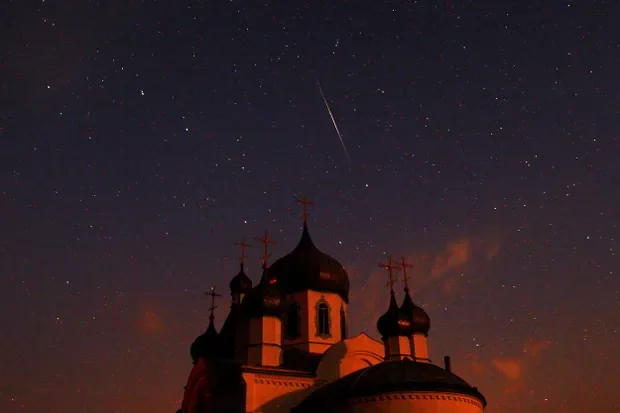Stargazers Ready for Year’s Best Meteor Show as Perseids Peak

Yearly spectacle, most apparent in the northern hemisphere, is generated by Earth passing through debris of an ancient comet.
It's time for stargazers to get out their deck chairs and try to catch one of the best meteor showers of the year.
The Perseid meteor shower is predicted to peak on the night of August 12, although it has been active since mid-July and will be visible for another few weeks.
The annual occurrence, which is most visible in the Northern Hemisphere, occurs when comet debris burns up in Earth's atmosphere.
"Every year, Earth passes through the material shed by an ancient celestial body, Comet 109P/Swift-Tuttle, which is estimated to be well over 5 billion years old - older even than Earth," said Dr Richard Parker, an astrophysicist from the University of Sheffield.
He stated the comet visits the inner solar system every 133 years and will come closest to Earth in 2126.
"Notably, the comet is the largest object that approaches Earth - but thankfully, it's not predicted to come dangerously close for thousands of years," Parker told reporters.
The Perseids appear because the comet's debris remains in space.
"Because we orbit the Sun year after year, we keep bumping into it at the same time and from the same orientation," explained Dr Ed Bloomer, an astronomer at the Royal Observatory, Greenwich." "So from our point of view, standing on the Earth, it looks as if [the Perseids] come from that same part of the sky every single year."
This radiant looks to be in the constellation Perseus, hence the meteor shower's name.
Perseus can now be seen in the northeastern sky. However, Bloomer suggested that for the best possibility of viewing the meteors, turn to the east-southeast and look towards Saturn, or to the north and look towards the constellation Ursa Major.
"To maximise your chances, if you turn a bit away from Perseus, you're likely to catch them out of the corner of your eye," he added, adding that indirect vision was easier to observe in low-light situations.
Experts warn that because the peak occurs just days after a full moon, less bright meteors may be difficult to spot this year.
Bloomer suggested going out late at night to a dark spot with a clear horizon and waiting up to 30 minutes for your eyes to adjust.
He suggested watching with friends, but warned that each meteor might flare up for about a second or less.
"It's one of those things where you can't detect it, so turn to someone near you, touch them on the shoulder, and ask them to look at the same section of the sky. "It's done by then," he said. "So in a way, it is quite a solitary thing, because you just have to sit and have your eyes open and that's it."